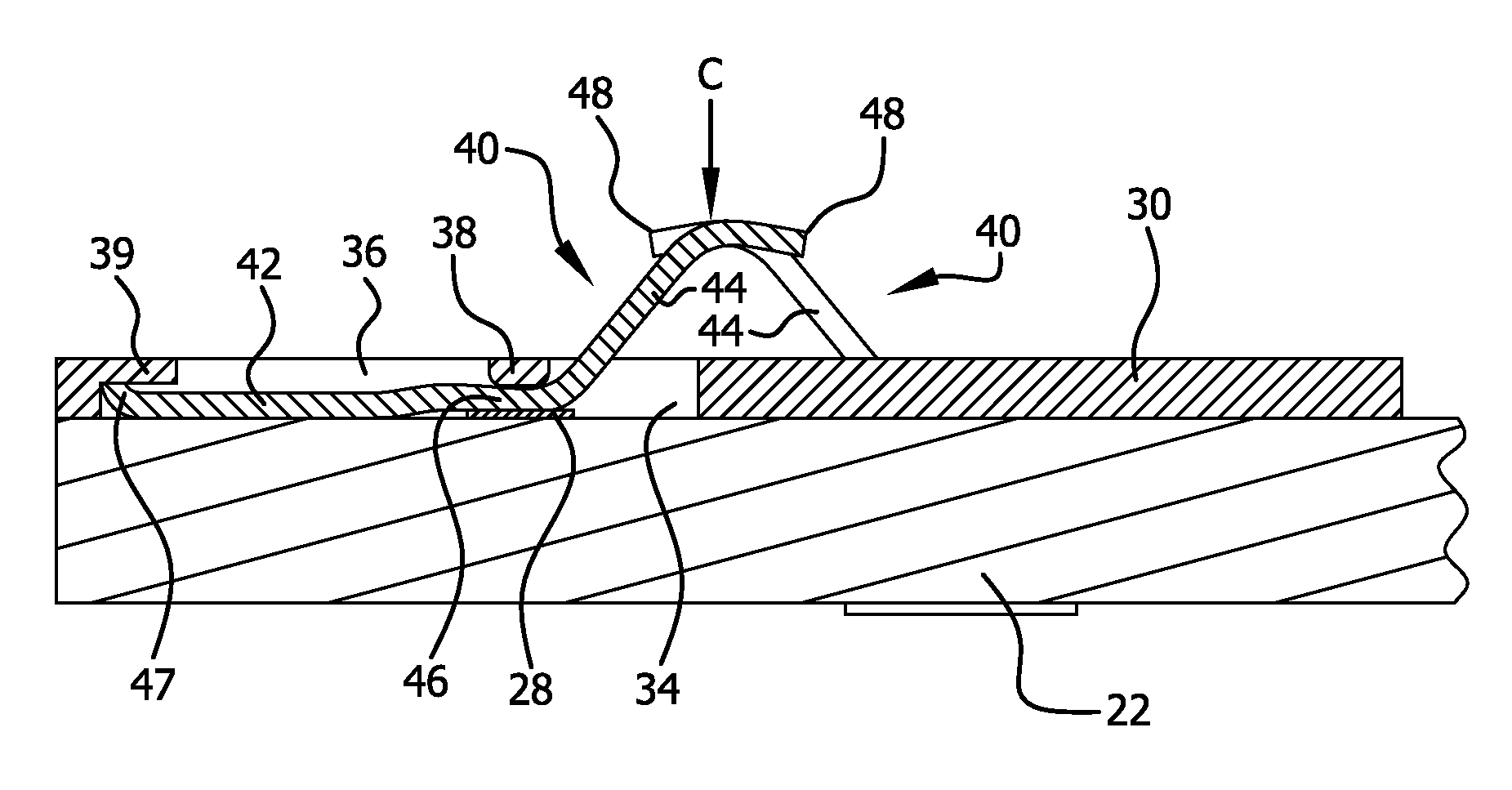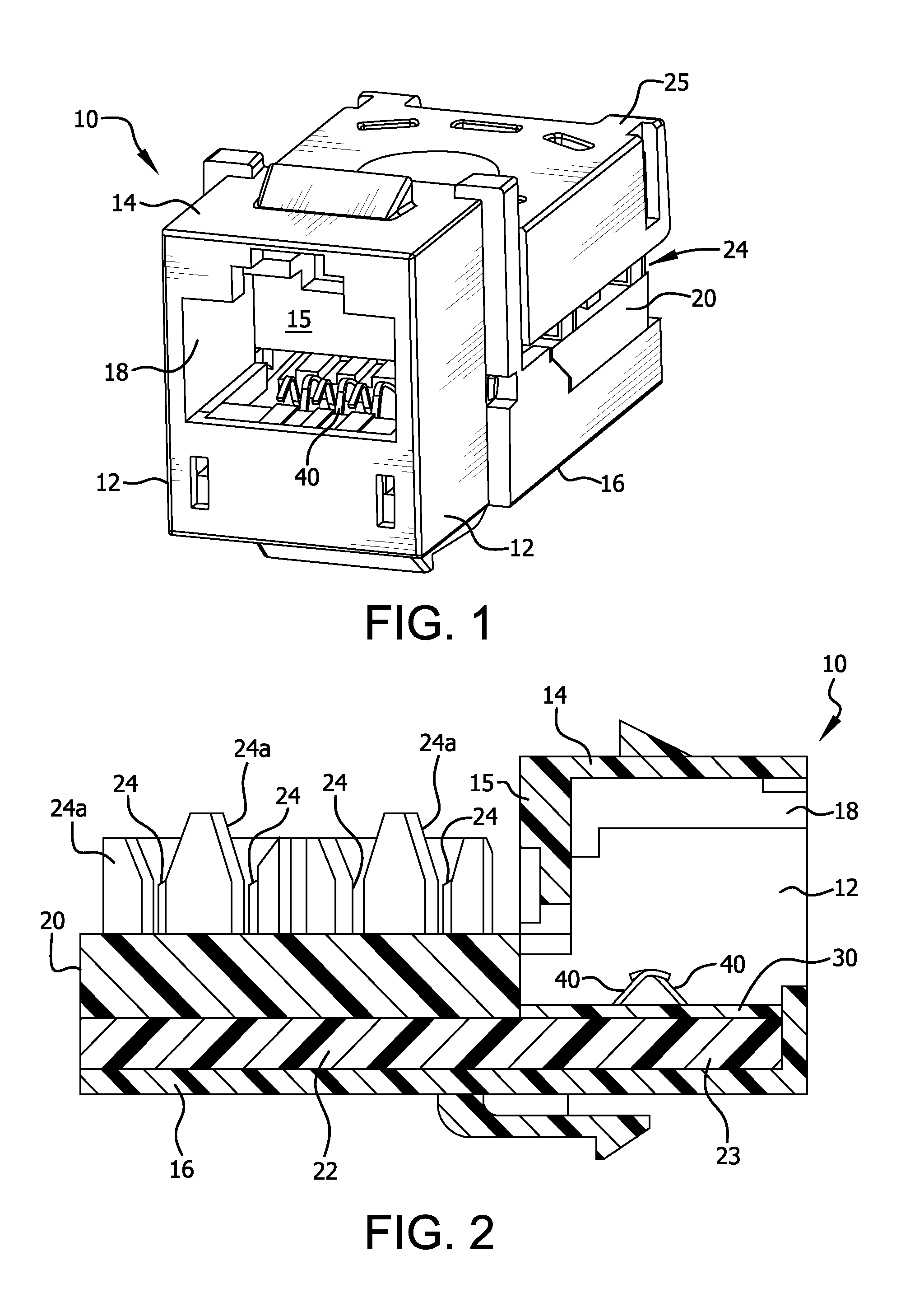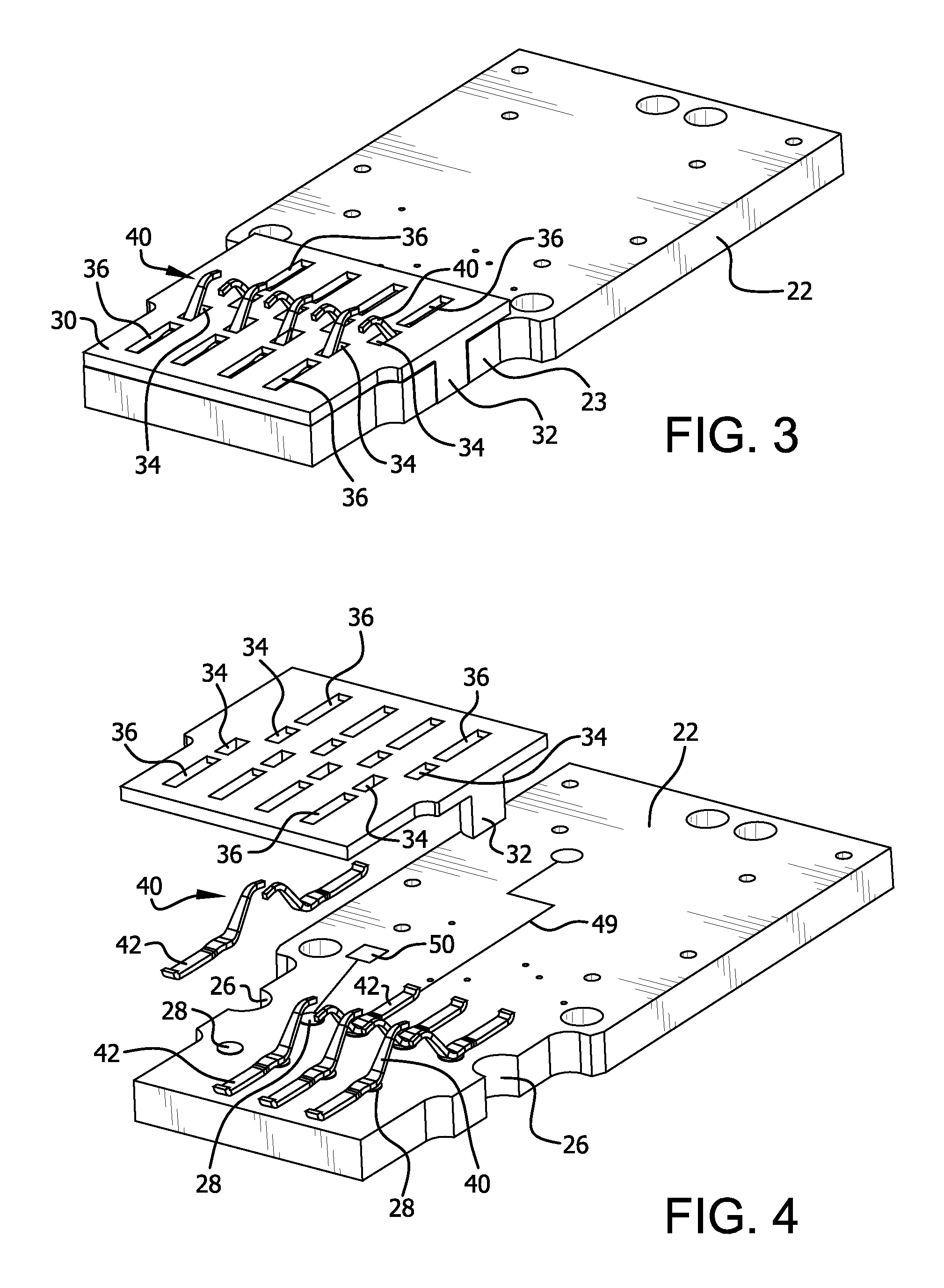Electrical connector with low-stress, reduced-electrical-length contacts
a technology of electric connectors and contacts, applied in the direction of coupling device connections, sustainable manufacturing/processing, final product manufacturing, etc., can solve the problems of reducing the service life of the connector, so as to reduce the stress concentration
- Summary
- Abstract
- Description
- Claims
- Application Information
AI Technical Summary
Benefits of technology
Problems solved by technology
Method used
Image
Examples
first embodiment
[0022]FIGS. 1 and 2 depict a jack that incorporates a PCB and contact assembly according to the invention. The jack comprises a dielectric housing 10 similar to that disclosed in U.S. Pat. No. 6,994,594, which is incorporated herein by reference in its entirety. The housing has side walls 12, a top wall 14, a rear wall 15, an extended bottom wall 16 and a front-opening plug-receiving cavity 18. A wiring unit 20 is coupled to the housing 10 and includes a printed circuit board (PCB) 22 supported on bottom wall 16, with its narrower front portion 23 extending through an opening in rear wall 15 into the jack interior below cavity 18. Eight wire terminals 24 are mounted on PBC 22 (only four are visible in FIG. 2 among posts 24a). Wire terminals 24 are standard insulation displacement contacts (IDC) to which standard wiring (not shown) can be connected and then secured under a snap-on cover 25, which appears only in FIG. 1. These terminals are electrically connected via conductive traces...
second embodiment
[0029]Assembly of the jack of the second embodiment involves first embedding the terminal contacts 140, in their proper parallel positions, in the elastomeric members 134, 136, leaving the connecting portions 144 exposed. The elastomeric members are then fitted to the PCB 122 in openings 124, 126. Fitting of the elastomeric members may involve, for example, bonding the elastomeric members to the PCB and / or engaging mating structures (e.g., ribs and grooves) on the elastomeric members and in the openings 124, 126. The assembled PCB is then installed in the jack housing 10.
PUM
| Property | Measurement | Unit |
|---|---|---|
| conductive | aaaaa | aaaaa |
| length | aaaaa | aaaaa |
| obtuse angle | aaaaa | aaaaa |
Abstract
Description
Claims
Application Information
 Login to View More
Login to View More - R&D
- Intellectual Property
- Life Sciences
- Materials
- Tech Scout
- Unparalleled Data Quality
- Higher Quality Content
- 60% Fewer Hallucinations
Browse by: Latest US Patents, China's latest patents, Technical Efficacy Thesaurus, Application Domain, Technology Topic, Popular Technical Reports.
© 2025 PatSnap. All rights reserved.Legal|Privacy policy|Modern Slavery Act Transparency Statement|Sitemap|About US| Contact US: help@patsnap.com



